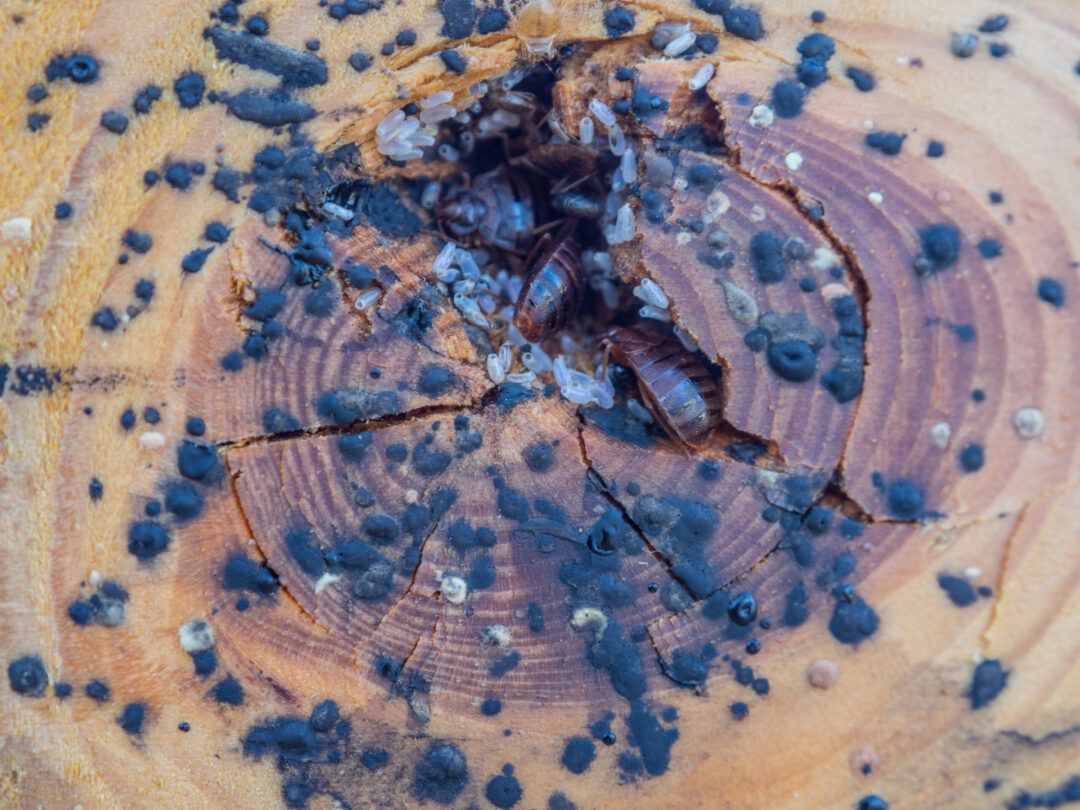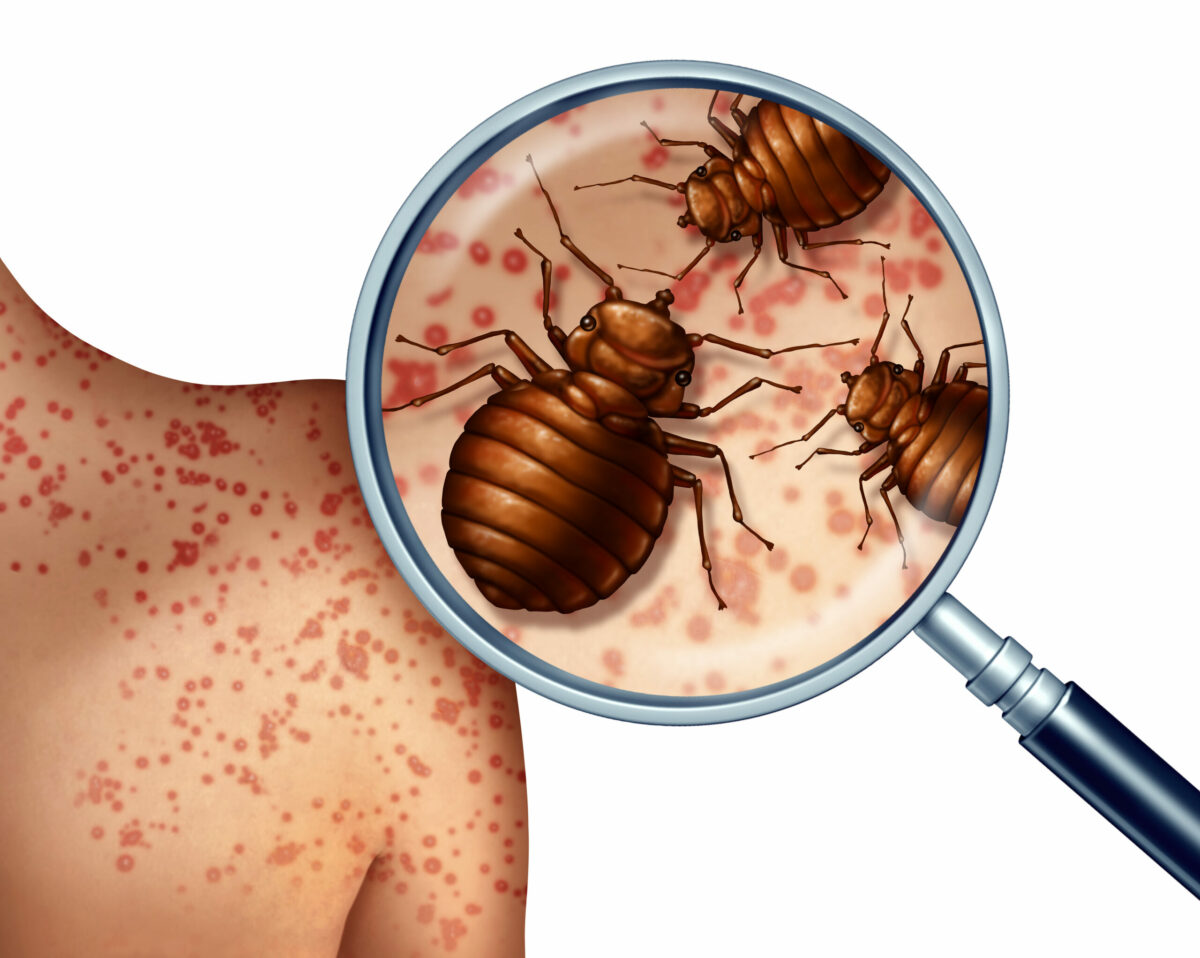Bed bugs, the common household pests known for their human blood-feeding habits, showcase a remarkable reproductive capacity. Female bed bugs are capable of laying an astoundingly high number of eggs—anywhere from 200 to 250 over their lifetime. This phenomenal rate of reproduction plays a crucial role in the spread and establishment of bed bug populations within human environments. It is essential to understand how these tiny insects achieve their high fecundity in order to develop effective management strategies.
The fecundity of bed bugs, along with factors such as their elusive nature and increasing resistance to pesticides, complicates efforts to control infestations. A deeper insight into the bed bug life cycle, specifically their reproductive behavior, is necessary for detecting, monitoring, and ultimately preventing outbreaks. Investigating the life history of bed bugs reveals the impact of various physiological and environmental factors on their egg production. Such knowledge not only informs individual efforts to combat infestations but also contributes to broader control and prevention practices beneficial for both home and business owners.
Key Takeaways
- Female bed bugs lay a substantial number of eggs, which challenges infestation management.
- Understanding reproductive behaviors is vital for effective detection and control strategies.
- Knowledge of bed bug biology aids in preventing and mitigating economic and health impacts.
The Life Cycle of Bed Bugs
https://www.youtube.com/watch?v=v6myZM7FO8w&embed=true
Bed bugs undergo a fascinating transformation through distinct life stages, from the initial egg to their final, reproductive adult form. Each stage defines specific development milestones critical to the survival of the species.
Egg Stage
Bed bugs start their life as eggs, measuring about 1 millimeter in length, resembling a tiny, white grain of rice. A female bed bug is capable of laying 200 to 250 eggs in her lifetime, depositing them in hidden locations with access to potential blood meals.
Nymphal Stages
After hatching, bed bugs enter the nymphal stages, undergoing five instars before reaching maturity. These nymphs are:
- First instar: About 1.5 millimeters in size, they require a blood meal to molt.
- Second to fifth instar: Each progressively larger, requiring additional blood meals for further molting.
The entire process from egg to adult typically spans about one to two months, depending on environmental conditions such as temperature and availability of food.
Adult Stage
Upon reaching the adult stage, bed bugs are about 5 millimeters long, reddish-brown, and oval-shaped. As adults, their primary focus shifts to feeding and reproduction. Adult bed bugs can live up to several months, even a year in favorable conditions, persistently seeking blood meals and producing new generations.
The Reproductive Behavior of Bed Bugs

Bed bugs exhibit fascinating reproductive strategies, crucial for their proliferation in various environments. We understand that a female bed bug lays approximately 200 to 250 eggs in her lifetime, an adaptation that ensures species survival. These eggs are usually deposited in secluded areas and adhere to surfaces through a sticky substance exuded by the female.
Mating System:
Bed bugs employ a unique mating process termed “traumatic insemination.” It involves the male piercing the female’s abdomen, depositing sperm directly into her body cavity. This approach bypasses the traditional copulatory structures. For more on this , check out Do Bed Bugs Mate.
Frequency of Mating:
While frequent mating is essential for maximizing reproductive output, it can be physically taxing on the female due to the nature of the process. It’s noteworthy to mention how mating can influence female longevity and egg production, crucial factors in bed bug population dynamics.
Egg Development:
- Egg Laying: Regular and ongoing post-mating
- Incubation: Roughly 6-10 days at room temperature
- Hatching: Emergence of nymphs ready to feed
Parental Investment:
No nurturing occurs after hatching; bed bugs are independent from birth. The focus of female bed bugs is on laying viable eggs rather than caring for the offspring.
Influencing Factors:
Environmental conditions such as temperature and access to a blood meal largely affect the reproductive cycle of bed bugs. Optimal conditions can result in more frequent egg-laying events. Understanding the interactions between bed bugs during these critical phases informs us about their behavior and offers insights into potential management strategies.
Factors Influencing Egg Production

When considering reproductive success in bed bugs, specifically the laying of 200 to 250 eggs, we need to explore the impact of both environmental conditions and nutritional sources.
Environmental Conditions
Temperature and Humidity: The rate of egg production in bed bugs is closely linked to the ambient temperature and humidity levels. Optimal conditions for bed bug reproduction are typically between 70°F and 80°F with a relative humidity around 70%. Studies have demonstrated that temperatures deviating from this range can lead to a reduced number of eggs laid.
Nutritional Sources
Frequency of Blood Meals: Adequate nutrition is critical for bed bugs to produce eggs. The frequency and quality of blood meals directly influence egg production. Female bed bugs with consistent access to blood meals can lay 1-7 eggs per day, which over time contributes to the 200 to 250 eggs phenomenon.
Understanding the 200 to 250 Eggs Phenomenon
In our examinations of the life cycle of bed bugs, we’ve identified a significant phase that involves the production of a substantial number of eggs. Female bed bugs are capable of laying an impressive 200 to 250 eggs over their lifetime. This fecundity is crucial for the proliferation and survival of bed bug populations in various environments.
Egg Laying Rate
- Initial Laying: Female can lay 1-7 eggs per day after a blood meal.
- Lifetime Total: Across a lifetime, produces an average of 200 to 250 eggs.
Factors Influencing Egg Production
- Mating Frequency: Multiple matings increase egg production.
- Food Availability: Regular blood meals are necessary for continuous egg laying.
Understanding how bed bugs can produce such a substantial brood informs our strategies for pest management and control. The rapid reproduction rate is a key reason why infestations can grow quickly and why early detection and intervention are crucial.
By closely studying the bed bug’s reproductive habits, we uncover the challenges of managing their populations. An emphasis on prevention and rigorous removal efforts are necessary to counter the natural propensity of bed bugs to produce large broods, ultimately helping us design more effective control methods.
Detection and Monitoring of Bed Bug Infestations
Detecting and monitoring bed bug infestations is crucial for effective pest management. We must first understand that bed bugs are elusive creatures. They can hide in crevices and only emerge to feed during the night, which makes early detection difficult. To combat these pests, we use various techniques:
- Visual Inspection: We start with a careful examination of bed linens, mattress seams, furniture joints, and other likely hiding places. For more info, check out Identify if you have bed bugs.
- Passive Monitors: These devices are placed in strategic locations and checked regularly for signs of bed bugs.
For more systematic surveillance, we can employ active monitors that use heat, carbon dioxide, and/or chemical lures.
| Method | Description |
|---|---|
| Visual | Manual checking of common hideouts |
| Passive | Devices capturing bugs without lures |
| Active | Devices attracting bugs with stimuli |
Interceptions devices and adhesive traps are also used to capture bed bugs without active lures. For a more in-depth examination, we can employ canine detection. These dogs are trained to sniff out bed bugs, providing a quick and accurate method for identifying infested areas.
After detection, we monitor the infestation by regular follow-ups. This helps in assessing the effectiveness of treatment and determining if additional measures are necessary. For detailed insights about the chemical ecology of bed bugs and the impacts of insecticides, the study titled “THE CHEMICAL ECOLOGY OF BED BUGS” offers valuable information. Continuing our efforts in detecting and monitoring is pivotal in controlling the population and spread of bed bugs.
Management and Control Strategies
To effectively mitigate and control a bed bug infestation, we must utilize a multi-faceted approach. This includes various chemical and non-chemical treatments, each with its own application methods and efficacy. Achieving success requires understanding and implementing Integrated Pest Management (IPM) practices that combine these strategies for a comprehensive solution.
Chemical Treatments
Chemical treatments for bed bugs often involve insecticides that target different stages of the bed bug life cycle. We aim to eradicate both adult bed bugs and their eggs to prevent future generations from emerging. Common chemicals used include:
- Pyrethroids: Synthetically produced insecticides similar to the natural pyrethrins found in chrysanthemum flowers.
- Neonicotinoids: These affect the nervous system of the bugs, similar to nicotine.
- Dessicants: Substances like diatomaceous earth which destroy the waxy layer of the insect’s exoskeleton, leading to dehydration.
We carefully select insecticides based on the particular scenario and resistance patterns observed in the bed bug population.
Non-Chemical Treatments
In our arsenal against bed bugs, we include non-chemical treatments that can be exceptionally effective without the use of insecticides:
- Heat treatment: Exposing bed bugs to temperatures of roughly 118°F (48°C) for 90 minutes or more can eliminate all life stages.
- Cryonite: Freezing bed bugs using carbon dioxide snow at temperatures well below freezing (-110°F or -79°C) kills them instantly.
- Encasements: Using mattress and box spring encasements can trap and starve bed bugs.
These non-chemical options can be particularly useful in sensitive environments where the use of chemicals is limited or prohibited.
For more on non chemical options, check out our article on non toxic remedies for bed bugs.
Integrated Pest Management
Integrated Pest Management (IPM) is a holistic strategy that combines a variety of treatment methods for managing bed bugs:
- Inspection: Regular and thorough inspections are paramount to detect bed bug activity early.
- Prevention: Measures including mattress encasements and minimizing clutter reduce hiding places for bed bugs.
- Chemical and non-chemical treatments: Judicious use of both methods for an adaptive approach that reduces the potential for bed bug resistance.
- Monitoring: After treatment, ongoing monitoring with traps and visual inspections ensures long-term control and success.
Our commitment to IPM emphasizes the importance of a sustained and informed effort in controlling bed bug infestations.
Prevention Tips for Home and Business Owners
As experts in urban pest control, we understand the challenges that bed bug infestations pose. It is crucial for both home and business owners to implement preventative measures to mitigate the risk of these prolific breeders. Here are effective tips to prevent the spread of bed bugs:
Regular Inspection: We recommend inspecting your space regularly, especially in areas where people sleep or rest. Look for signs of bed bugs, which include small reddish or brown spots on bedding or furnishings.
- Vacuum Frequently: Regular vacuuming can help remove any early signs of bed bugs, particularly from carpets, furniture, and fabric seams.
- Reduce Clutter: A tidy environment gives bed bugs fewer places to hide, making detection and eradication efforts more effective.
- Encase Mattresses and Pillows: Protective covers can prevent bed bugs from penetrating and nesting in your bedding.
Professional Pest Control: For the best results, we advocate enlisting the help of professional pest control services to conduct inspections and treatments as needed.
Educate Yourself and Others: Awareness is the first step in prevention. Learn about bed bugs, how they spread, and ways to treat them. By educating staff and family members, everyone becomes a participant in prevention.
Remember, swift action is key. If you notice signs of bed bugs, it’s important to act promptly to prevent a small problem from becoming a larger infestation.
The Economic and Health Impact of Bed Bug Infestations
Bed bug infestations present an array of economic and health implications that affect us in our own homes, the hospitality sector, and other commercial environments. From a financial perspective, the costs of eradicating these pervasive pests can be significant.
Economic Impacts:
- Extermination Costs: Remediation involves professional pest control services, which can range from moderately priced to extremely expensive depending on the severity and location of the infestation.
- Furniture Replacement: Often, infested furniture must be discarded, leading to substantial replacement costs.
- Revenue Loss in Hospitality: Hotels and other lodgings may lose revenue due to room closures during treatment and damaged reputations.
Health Impacts:
- Skin Reactions: Many of us experience itchy, red welts as a reaction to bed bug bites. These can lead to secondary infections if scratched excessively.
- Psychological Effects: The presence of bed bugs can cause us significant emotional distress, including anxiety, insomnia, and even psychological trauma.
Preventative Measures and Regular Inspections: These are critical in mitigating the economic and health impacts. Our awareness and vigilance can reduce the likelihood of widespread infestations.
Awareness and Education: Understanding the facts about bed bugs, their behavior, and prevention strategies can save us from the financial burden and health hazards associated with these infestations.

































